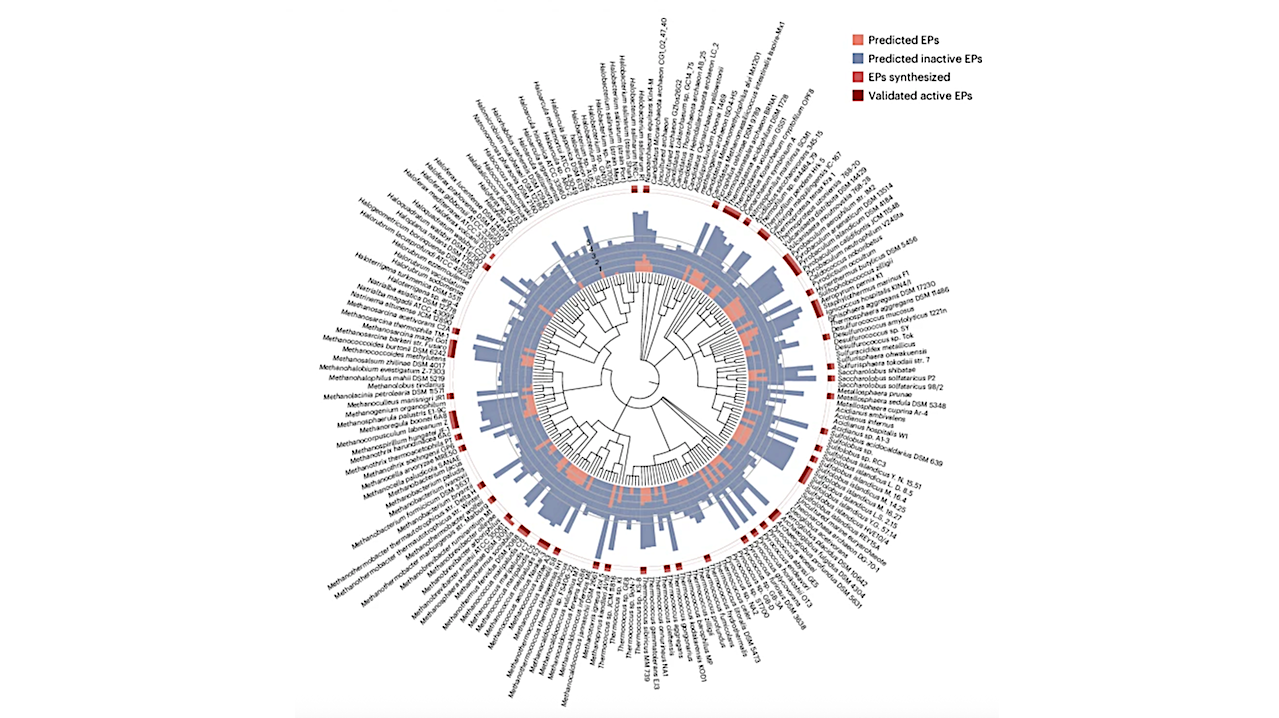Science
AI Reveals New Antibiotic Candidates from Ancient Microbes

Researchers at the University of Pennsylvania have unveiled a promising approach in the battle against antibiotic resistance, utilizing artificial intelligence to identify new antibiotic candidates from ancient microbes known as Archaea. The findings, detailed in a study published in Nature Microbiology, highlight the potential of these resilient microorganisms, which have thrived in some of Earth’s most extreme environments for billions of years.
The study’s lead author, César de la Fuente, a Presidential Associate Professor at the university, noted that traditional searches for antibiotics have primarily focused on fungi, bacteria, and animals. In contrast, this research expands the search to Archaea, marking a significant shift in the quest for new antimicrobial agents. “There’s a whole other domain of life waiting to be explored,” de la Fuente explained.
Exploring the Unique Biology of Archaea
Archaea represent a distinct branch of life, separate from both bacteria and eukaryotes, which include plants and animals. While they may appear similar to bacteria under a microscope, their genetic makeup and biochemical properties set them apart. This unique biology enables Archaea to survive in extreme conditions, such as boiling acid and deep-sea hydrothermal vents, making them a rich source for discovering innovative compounds.
Co-first author Marcelo Torres emphasized the significance of studying Archaea, stating, “If they’ve survived for billions of years under harsh conditions, maybe they’ve developed unique ways to fight off microbial competitors.” The researchers believe that the biochemical defenses of these ancient microbes could lead to the identification of new molecular tools, including potentially effective antibiotics.
Artificial Intelligence Accelerates Discovery
To identify potential antibiotic compounds, the research team employed an advanced version of their artificial intelligence tool, APEX. Originally designed to identify antibiotic candidates from ancient biological sources, APEX was retrained on thousands of peptide sequences known for their antimicrobial properties. This enabled the researchers to predict which peptides in Archaea might inhibit bacterial growth.
Scans of 233 species of Archaea resulted in a remarkable yield of over 12,000 antibiotic candidates. The team labeled these molecules “archaeasins,” which were found to differ from known antimicrobial peptides, particularly in their electrical charge distribution. Following this discovery, the researchers tested 80 selected archaeasins against various bacteria.
Fangping Wan, a postdoctoral fellow involved in the study, remarked, “Trying to find new antibiotics one molecule at a time is like looking for needles in a haystack. AI speeds up the process by identifying where the needles are likely to be.”
Promising Results Against Drug-Resistant Bacteria
The research revealed that archaeasins function differently than traditional antibiotics. While most known antimicrobial peptides attack bacterial outer defenses, archaeasins disrupt essential internal processes by scrambling the electrical signals that sustain bacterial life. In tests against a range of drug-resistant bacteria, 93% of the 80 archaeasins displayed activity against at least one bacterium.
In subsequent trials using animal models, three archaeasins were selected for further evaluation. Remarkably, within four days of administration, these compounds successfully halted the spread of a drug-resistant bacterium commonly acquired in hospitals. Notably, one archaeasin demonstrated effectiveness comparable to polymyxin B, an antibiotic often used as a last-resort treatment for drug-resistant infections.
“This research shows that there are potentially many antibiotics waiting to be discovered in Archaea,” de la Fuente stated. With rising antibiotic resistance globally, the discovery of new compounds from unconventional sources is critical for public health.
Future research will focus on enhancing APEX to predict antibiotic candidates based on their structural properties, potentially increasing the tool’s accuracy. The researchers also aim to investigate the long-term efficacy and safety of archaeasins, with the goal of advancing them to human clinical trials eventually.
“This is only the beginning,” de la Fuente concluded. “Archaea is one of the oldest forms of life, and clearly has much to teach us about how to outsmart the pathogens we face today.”
Funding for this research was provided by various organizations, including the Procter & Gamble Company, United Therapeutics, and the National Institutes of Health. The study highlights the importance of exploring the ancient biological realm for solutions to contemporary health challenges.
-

 Lifestyle3 months ago
Lifestyle3 months agoLibraries Challenge Rising E-Book Costs Amid Growing Demand
-

 Sports3 months ago
Sports3 months agoTyreek Hill Responds to Tua Tagovailoa’s Comments on Team Dynamics
-

 Sports3 months ago
Sports3 months agoLiverpool Secures Agreement to Sign Young Striker Will Wright
-

 Lifestyle3 months ago
Lifestyle3 months agoSave Your Split Tomatoes: Expert Tips for Gardeners
-

 Lifestyle3 months ago
Lifestyle3 months agoPrincess Beatrice’s Daughter Athena Joins Siblings at London Parade
-

 World3 months ago
World3 months agoWinter Storms Lash New South Wales with Snow, Flood Risks
-

 Science3 months ago
Science3 months agoTrump Administration Moves to Repeal Key Climate Regulation
-

 Science2 months ago
Science2 months agoSan Francisco Hosts Unique Contest to Identify “Performative Males”
-

 Business3 months ago
Business3 months agoSoFi Technologies Shares Slip 2% Following Insider Stock Sale
-

 Science3 months ago
Science3 months agoNew Tool Reveals Link Between Horse Coat Condition and Parasites
-

 Sports3 months ago
Sports3 months agoElon Musk Sculpture Travels From Utah to Yosemite National Park
-

 Science3 months ago
Science3 months agoNew Study Confirms Humans Transported Stonehenge Bluestones









